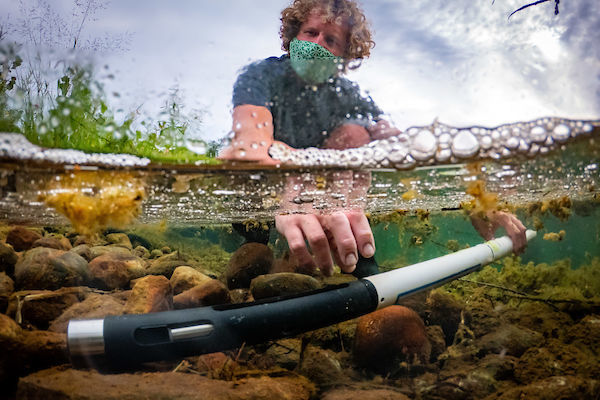

The University of Notre Dame has finished the construction of two new watersheds at the Notre Dame Linked Experimental Ecosystem Facility (ND-LEEF), which will expand the capacity of the research facility. The construction of the new watersheds began September 2019, but paused from January 2020 until August 1, 2020, to account for the eagle breeding season.
“From the impact of engineered materials in water systems, to using environmental DNA (eDNA) to monitor invasive and endangered species in an ecosystem, ND-LEEF has the ability to support a variety of environmental research programs,” said Diogo Bolster, professor of civil and environmental engineering and earth sciences and associate director of the Environmental Change Initiative (ND-ECI). “We are so grateful to our donors Jim and JoAnne Morrison, who also previously contributed the Morrison Family Pavilion at ND-LEEF. Having this additional capacity is essential to support the research of both Notre Dame and external users.”

The new watersheds are nearly identical copies of the other two watersheds on site, consisting of interconnected ponds, streams, and wetlands. However, a new valve structure will allow for five additional flow options for how the water may move through these new watershed systems. This allows researchers to have more options for the water flow systems they may want to mimic for various experiments, and will also allow for more simultaneous research and increased scientific replication of field settings. All watersheds on site can link or separate the pond, stream, and wetland ecosystems to control how each ecosystem flows from one to another.

The watershed construction was shifted approximately 300 feet east of the initially planned location to minimize disturbance to the nesting location of the bald eagles that return to ND-LEEF each spring. Now that construction is complete, the new watersheds will be put into use for a U.S. Department of Defense-sponsored project investigating the dynamics of eDNA in flowing waters, led by ND-ECI Director and Galla Professor Jennifer Tank.
ND-LEEF is a globally unique research facility, supported by the ND-ECI, that houses engineered experimental watersheds, each consisting of an interconnected pond, stream, and wetland. Scientists use ND-LEEF to conduct experiments in a field-like setting but in a more controlled environment than one can find in nature. Each experimental watershed is roughly the length and width of a football field and located five miles north of campus on six acres of land within St. Patrick’s County Park.
Contact:
Brett Peters / ND-LEEF Assistant Director
Environmental Change Initiative / University of Notre Dame
bpeters2@nd.edu / +1.574.367.7621
environmentalchange.nd.edu / @NDLEEF
About Notre Dame Research:
The University of Notre Dame is a private research and teaching university inspired by its Catholic mission. Located in South Bend, Indiana, its researchers are advancing human understanding through research, scholarship, education, and creative endeavor in order to be a repository for knowledge and a powerful means for doing good in the world. For more information, please see research.nd.edu or @UNDResearch.
Originally published by at environmentalchange.nd.edu on September 21, 2020.